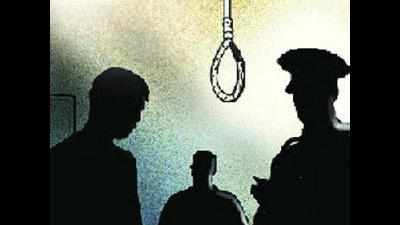- News
- City News
- mumbai News
- Maharashtra links farmer suicides to need for Maratha quota
Trending
This story is from December 8, 2016
Maharashtra links farmer suicides to need for Maratha quota

Representative image
MUMBAI: The Maratha community forms the highest percentage of farmers in suicides committed in the last two years in the Marathwada region.
“In the Marathwada region where the Maratha community is kept out of reservation benefits, its percentage in farmer suicides is the highest at 53 percent,'' said the state affidavit filed in the Bombay high court.
The Bombay high court bench headed by Chief Justice Manjula Chellur is hearing a bunch of petitions, which have challenged the constitutional validity of a July 2014 decision of the state government that provides a 18% reservation for the Maratha community in education and government jobs on the grounds that they were socially and economically backward.
The HC set January 25, 2017 as the deadline for all petitioners and interveners to file their replies to the state affidavit. It posted the matter to January 30 to fix the date of final hearing.The state cited a Gokhale Institute survey report which had done a survey of almost 3,000 suicides by farmers between 2014-16.
The report further states that, all the total 1,300 migrant households interviewed, it was found that in some of the villages, Marathas were high in numbers and in some villages, Vanjaris were more. Therefore, the qualitative analysis of social, economic and educational condition of the caste is presented where the population of these castes is high.
“In the Marathwada region where the Maratha community is kept out of reservation benefits, its percentage in farmer suicides is the highest at 53 percent,'' said the state affidavit filed in the Bombay high court.
The Bombay high court bench headed by Chief Justice Manjula Chellur is hearing a bunch of petitions, which have challenged the constitutional validity of a July 2014 decision of the state government that provides a 18% reservation for the Maratha community in education and government jobs on the grounds that they were socially and economically backward.
The HC set January 25, 2017 as the deadline for all petitioners and interveners to file their replies to the state affidavit. It posted the matter to January 30 to fix the date of final hearing.The state cited a Gokhale Institute survey report which had done a survey of almost 3,000 suicides by farmers between 2014-16.
The state's 2800-page affidavit with annexures of reports and references to pre-Independence manuscripts and records, says that even in 1820s `Kunbi Marathe' was a term denoted for the caste that included Marathas. The affidavit settled by government pleader Abhinandan Vagyani relies heavily on the Gokhale report and the date it provides, to show that the community has been largely ignored and was suffering the consequences of educational and financial depravity . There is a high percen tage of unemployed persons among the migrants belonging to Maratha and Vanjari community , said the state, “In both the cases, only 30% of them could get employment and 70% remained unemployed. This is serious case of social and economic backwardness. The situation of migrants belonging to Maratha community and other communities is very critical on the count of standard of living, social status, educational status and employment.'' The state, which is now seeking to vacate a stay imposed by the Bombay high court on the 2014 reservation said “This situation, if prolonged, leads to poverty. Ultimately poverty leads to social, educational and economical backwardness.Such type of backward segment is excluded and deprived of the benefits available to all other well off segments.“
The report further states that, all the total 1,300 migrant households interviewed, it was found that in some of the villages, Marathas were high in numbers and in some villages, Vanjaris were more. Therefore, the qualitative analysis of social, economic and educational condition of the caste is presented where the population of these castes is high.
End of Article
FOLLOW US ON SOCIAL MEDIA











